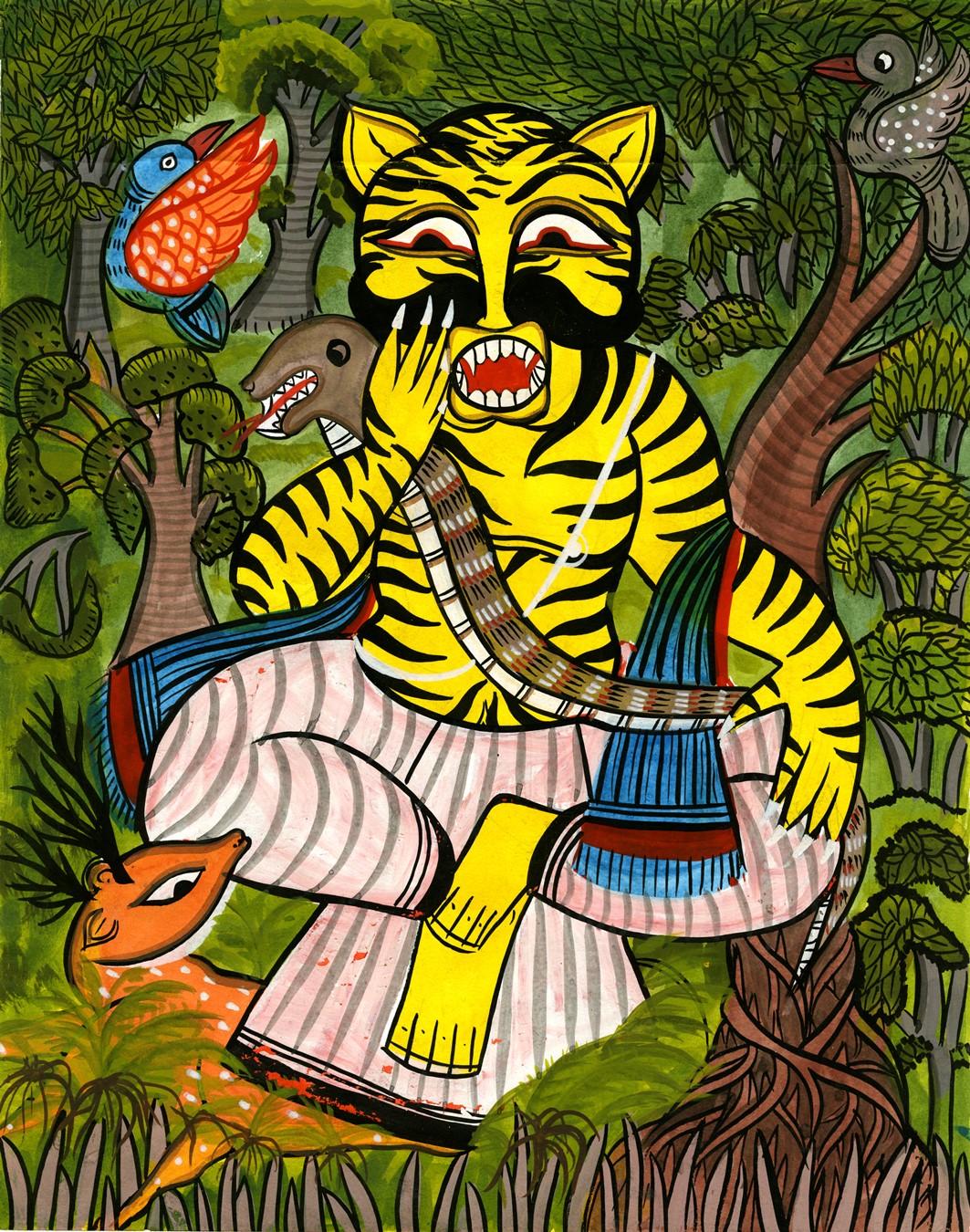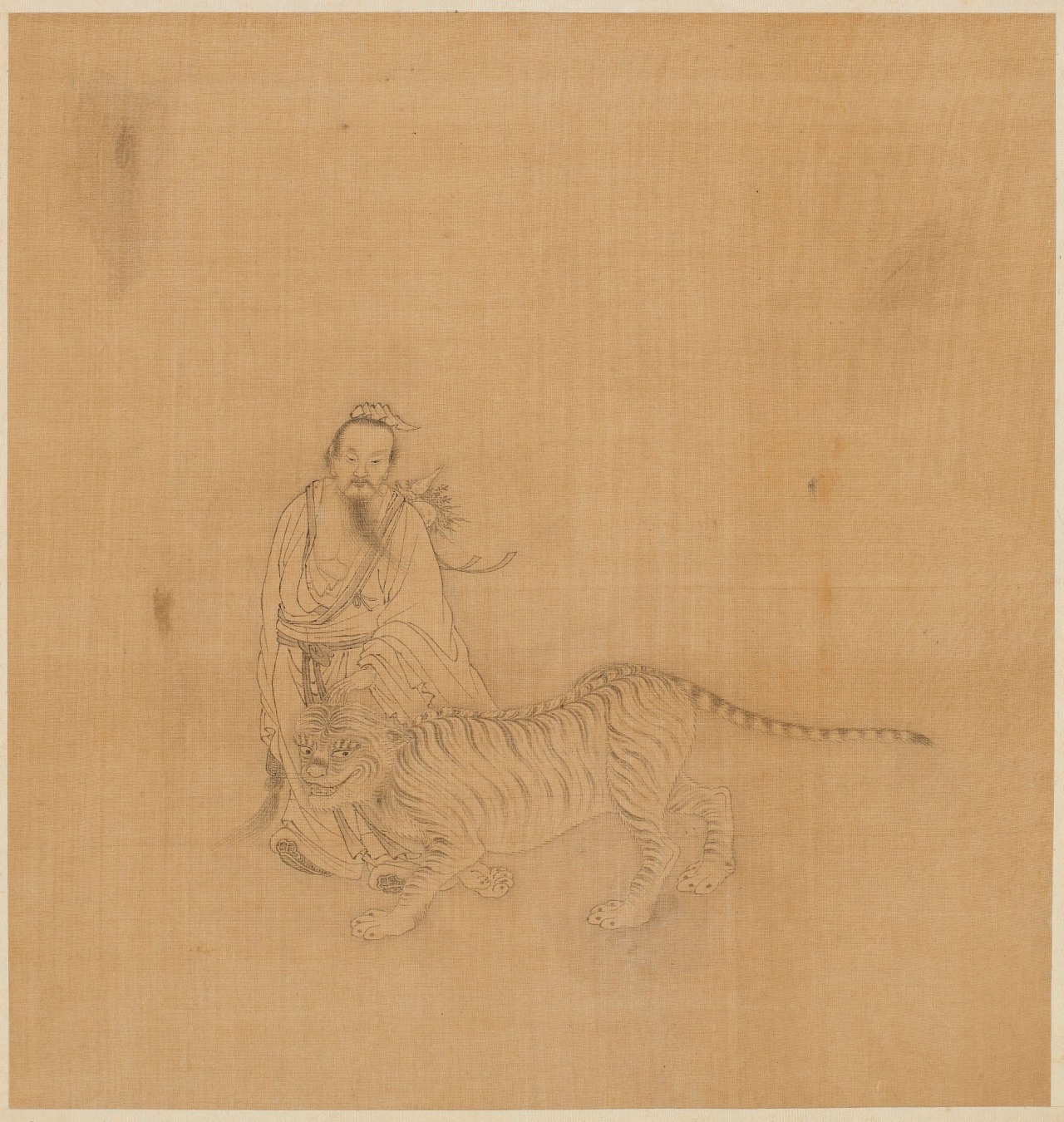Tigers and tiger products are in use for medical purpose in many countries across the Indian ocean. Stories about this animal were gathered and written by students. They are all part of a pedagogical project, funded by the National University of Singapore and the Université de Paris. The Bestiary site is a work-in-progress and a participatory educational tool, representing animals whose products or body parts are used to promote health and healing.
A Supernatural Being Reduced To Powder
A Story by Loo Yan Yi, Renee
The tiger has been tightly interwoven into Chinese history and to this date remains a significant part of Chinese culture. Following ancient Chinese myths, five types of tigers are featured in Chinese cosmology which are believed to be responsible for balancing the cosmic forces and maintaining harmony in the cosmos. The White Tiger commands the metal elementals and rules during autumn, the Black Tiger commands the water elementals and rules during winter, the Blue Tiger commands the earth elementals and rules during spring, and the Red Tiger commands the fire elementals and rules during summer. Distinct from them, the Yellow Tiger rules above the rest and symbolises the sun.
In Chinese culture, the tiger is held in high regard. It is seen as a symbol of power, royalty and courage. The stripes on its forehead resemble the word “王” meaning “king” in Chinese, leading to the belief that a tiger is a natural born ruler. The tiger’s power is thought to rival that of the dragon (a legendary mythical Chinese creature) and is often put on par, or compared to each other, in Chinese expressions like “虎嘯龍吟” and “龍騰虎躍”. Although likened to each other in strength, the tiger symbolises the physical realm while the dragon symbolises the spiritual realm, and the Chinese rarely view the tiger as a deity or a supernatural being.
The tiger is also renowned in Chinese culture as an embodiment of the “Yang” (positive, as opposed to the “Yin”) energy. It is associated with many positive attributes and is featured in many Chinese superstitions involving protection and luck. Chinese folk tales pass down legends of tigers that kill evil men to protect good men, and are enemies of evil spirits. These stories manifest themselves in contemporary Chinese practices too. Some families paint tigers on the walls of their homes to “guard” their houses and wear “tiger claw” amulets to ward off evil.
As much as tales are told to elevate the status of tigers, many other stories depict tigers as man-eating or evil. In 1959, Mao Zedong led a campaign to exterminate tigers, claiming that they were enemies of people. Time and time again, the ferocity and danger of the tiger has been highlighted, and stories of man-tiger fights have been passed down in tradition. Despite the Chinese attempts to honour the tiger, its numbers have been dwindling – largely driven by the demand for tiger parts in the usage for traditional Chinese medicine (TCM). Tigers are listed as “Endangered” and are red-listed by the IUCN. The South China tiger (native subspecies of China) has been labelled as critically endangered; they no longer exist in the wild and can only be found in man-made enclosures. China remains one of the biggest consumers of tigers, fuelled by the Chinese use of tiger parts for medicinal properties.
Value in Asian medicine
Tigers are also held in high regard due to their medicinal properties. In TCM, every part of the tiger is believed to have medicinal value. Perhaps the most well-known use of the tiger are its bones – having high calcium and protein – to treat a multitude of ailments including arthritis, general weakness, headache and stiffness or paralysis. Usually sold in powder form, the bones are also used to make “tiger wine”. Other parts of the tiger which are used are its whiskers (for toothache), its faeces (for boils), its eyeballs (for malaria), etc.
Whether parts of the tiger truly have natural medicinal properties, or is an extension of properties based on the mythical strength that the Chinese believe tigers as having, is an ongoing debate between proponents of TCM and western medical experts. Although the legitimacy of TCM is questioned by western practitioners, many Asians (in particular the Chinese) strongly advocate for and subscribe to TCM practices. In many ways, the tiger is regarded as an animal with intrinsic “healing powers” that are useful to combat a variety of illnesses.
Research has not found tigers to be explicit vectors that carry and transmit common diseases to humans. In other words, research has not proven tigers to be spreaders of disease the way birds have been found to spread Avian flu to the human population. However tigers are possible vectors of disease-spread in indirect ways because research has found that tigers are able to be infected by the same diseases as humans. For instance, tigers were able to contract the Asian Avian Influenza (H5N1) , a highly pathogenic disease. This came to light when two tigers at a zoo in Suphanburi, Thailand died unexpectedly and were found to have contracted H5N1 after an autopsy was conducted.
Although H5N1 is less common than its related strain H1N1, it has a high mortality rate, with 60% of cases resulting in death. It is less commonly transmitted from person to person (one of the reasons for its low rate of spread), and is instead spread from animal to human through direct contact with infected poultry. When it was found that tigers were also able to contract the disease, the research findings were ground-breaking. Prior to that, the virus was not known to infect felines. Similar to the transmission of virus to humans, the H5N1 disease was transmitted to the tigers due to the consumption of infected poultry.
The current global pandemic has proven that COVID-19 too is easily transmitted between humans, but the transmission of COVID-19 from humans to animals, and vice versa, was not believed to be likely. However, in April 2020, a tiger in the Bronx zoo was discovered to have contacted COVID-19, a result of the frequent human-tiger interaction. This raised many concerns among the public – if a tiger could contact COVID-19 from humans, would humans be able to pass the disease to (or contract the disease from) other animals, more importantly, their own pets? In both cases of H5N1 and COVID-19, evidence has shown that tigers can indeed contract diseases like humans and can even contract them from humans. What we can conclude is that the relationship between tigers, humans and diseases have become more prominent due to the increased “contact” between tigers and the human population.







